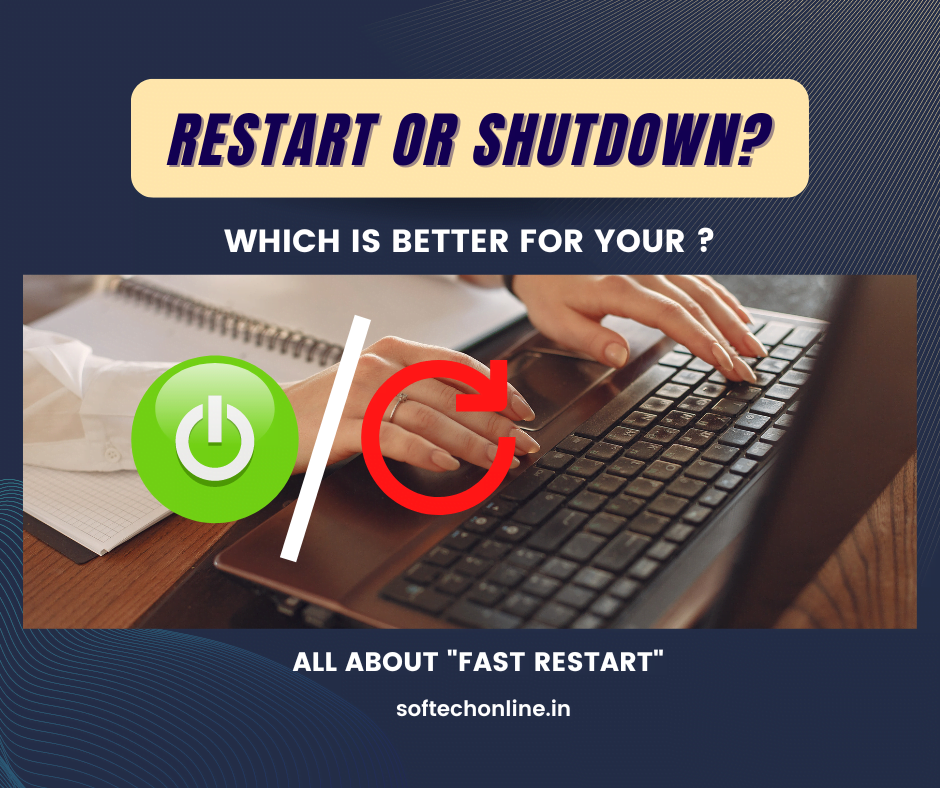Restart or Shutdown and Start again? Which is better for your computer?
In this article, we will be discussing, “Restart” or “Shutdown and Start again” whenever you face any issue with your computer.

Every time my colleagues call me about some computer-based problem, I tell them to reboot; in ninety-nine percent of the cases, the problems are fixed. But there is a right way and a wrong way to go about rebooting your device.
Let me tell you what I mean. The main reason why rebooting solves so many issues is that it clears up the RAM which is short for “Random Access Memory”. When your computer is ON, you have background processes running, you have logs that are being created, plus the programs that you work with will create temporarily cache files. (Cache files are files that help your software load information faster so you can think of it like short notes that your computer takes, which help it quickly put together the original data back). A proper reboot cleans all of that out and gives your windows system a fresh start.
Now, Restart or Shutdown and Start again? Or it doesn’t really matter?
Well, it actually matters a lot, so naturally when we see the options shutdown and restart we assume that a shutdown is more comprehensive and it kills all the processes. That’s not true it’s the restart that kills all processes you see.
Many years ago, Microsoft introduced the fast startup feature starting with Windows 8. Usually, Microsoft had named this feature perfectly “fast startup”. The fast startup became the default in windows since then. It’s probably your default too.
The main purpose of this as the name suggests is to save valuable seconds when you boot up your computer. It does this by saving some of the system-related files and device drivers to a hibernation file during the shutdown process. Then when you turn on your pc again it reads that hibernation file and reloads the content which makes it faster than a restart.
When you do a restart all the windows device drivers and services are initialized from scratch. Because a fast startup doesn’t load a fresh session, some of the problems that it had before you shut down may still continue after you turn on your computer again. You might have noticed that when you have to install any windows update, it asks you if you want to install updates and shut down or install updates and restart; Even if you select to install and shut down it’s going to restart first and then do a shutdown again. That’s because it wants to clean things up with the restart before shutting down. if you want to change your shutdown experience and have a proper shutdown that acts like a restart you can just turn off the “fast restart” especially if you have a modern laptop or desktop with fast SSD hard drives, the startup time difference is going to be very minimal.
To disable fast startup, press the windows button and type in “control panel” select System and Security, then select Power Options, on the left pan select “choose what the power buttons do”.

Under shutdown settings, you’re going to see a checkbox for “fast startup” which will probably be checked. If the selections are grayed out click on “change settings that are currently unavailable” up over there

Then uncheck fast startup and save your change. That’s it you don’t have to worry about a clean reboot anymore because every time you shut down it’s going to act like a restart. You may try with fast startup on and off and check the boot-up time, you couldn’t see much of a difference.
If you have windows 11 you don’t have to click the windows icon and then move all the way to click the power button and then select what you want. Instead, just right-click on the windows icon and select what you want that works in windows 10 too.
Hope this article was useful to you.
Read More articles at https://softechonline.in/
Video articles at https://www.youtube.com/c/softechonline/videos

5